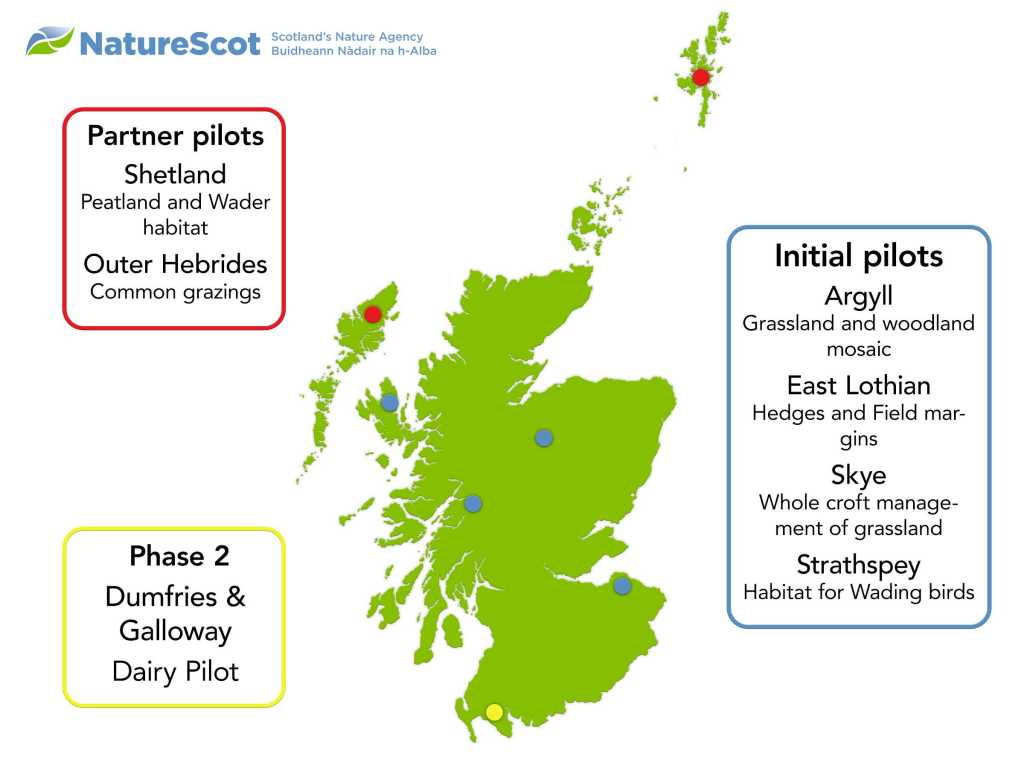Today’s blog, written by NatureScot agriculture officer, Kirsten Brewster, details a new trial in Scotland, which gives incentives to farmers and crofters to manage flower-rich meadows, help vulnerable populations of wading birds thrive, restore peatlands, and manage other nature-rich areas.

Piloting an Outcomes Based Approach in Scotland (POBAS) is a project we’re taking forward with farmers and crofters looking at how best to benefit the environment on agricultural land in the future. We expect to see significant change in the coming years after we leave the EU and therefore leave the Common Agricultural Policy, which has been pivotal in supporting farm incomes. Our project aims to pilot alternative approaches after 2024 (following the current transitionary period from 2021-2024 of Stability & Simplicity in Scotland).
A large part of our project so far has focussed on payment by results as a means of rewarding good management for nature on farms and crofts. Agri-environment schemes have in the past tended to involve specific prescriptive management measures as a means of achieving the desired results. On the other hand, results-based schemes, such as the one we’re trialling, have payments linked to evidence of what has been achieved, rather than evidence of completing specific management actions. Farmers have the flexibility to decide how to achieve a positive environmental result on their land, and their fields’ environmental quality is scored: the more the land supports nature, the higher the score and consequently the higher the payment.

A results-based scheme also has the added benefit of routine monitoring of habitats to allow us to review success in achieving the desired outcomes. Results-based schemes are being trialled across Europe (for more information, see the RBP website) because they have the potential to achieve benefits for the environment while also working well for land managers.
We are testing this approach with over 50 farmers and crofters within five pilot areas across Scotland. We are also working with partners (RSPB and the European Forum on Nature Conservation and Pastoralism) in a further two pilots.
Feedback from the workshops across all areas showed that there is enthusiasm and scope for taking forward this approach in Scotland and that it is possible to have a standard approach that can be tailored for a locality.

as well as the types of natural improvement they each focus on.
We recognise that this approach will not be suitable in all circumstances, but it is exciting to develop an approach that could provide more flexibility for farmers, an improved understanding of how to manage the land to achieve a better-quality environment, and better value for money, while keeping the approach simple enough for it to be a realistic and practical way forward.
We have now published the report of Phase 1 on our website while we work on phase 2, finalising the scorecards, guidance and payment rationales to enable us to run a pilot scheme that would put the methods into practice.
If you want to read more about this exciting and novel area of work, download our Phase 1 Report here.

You must be logged in to post a comment.